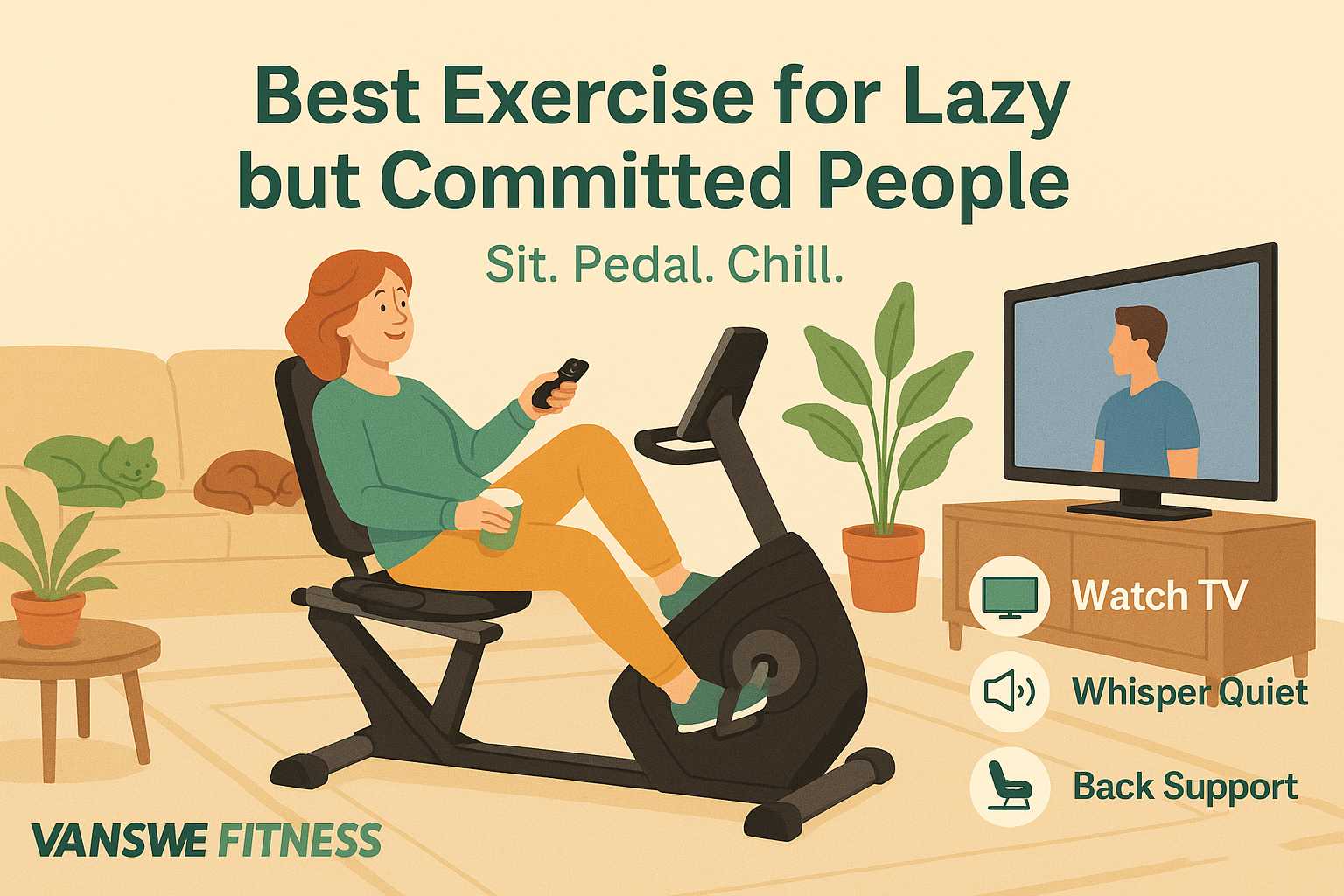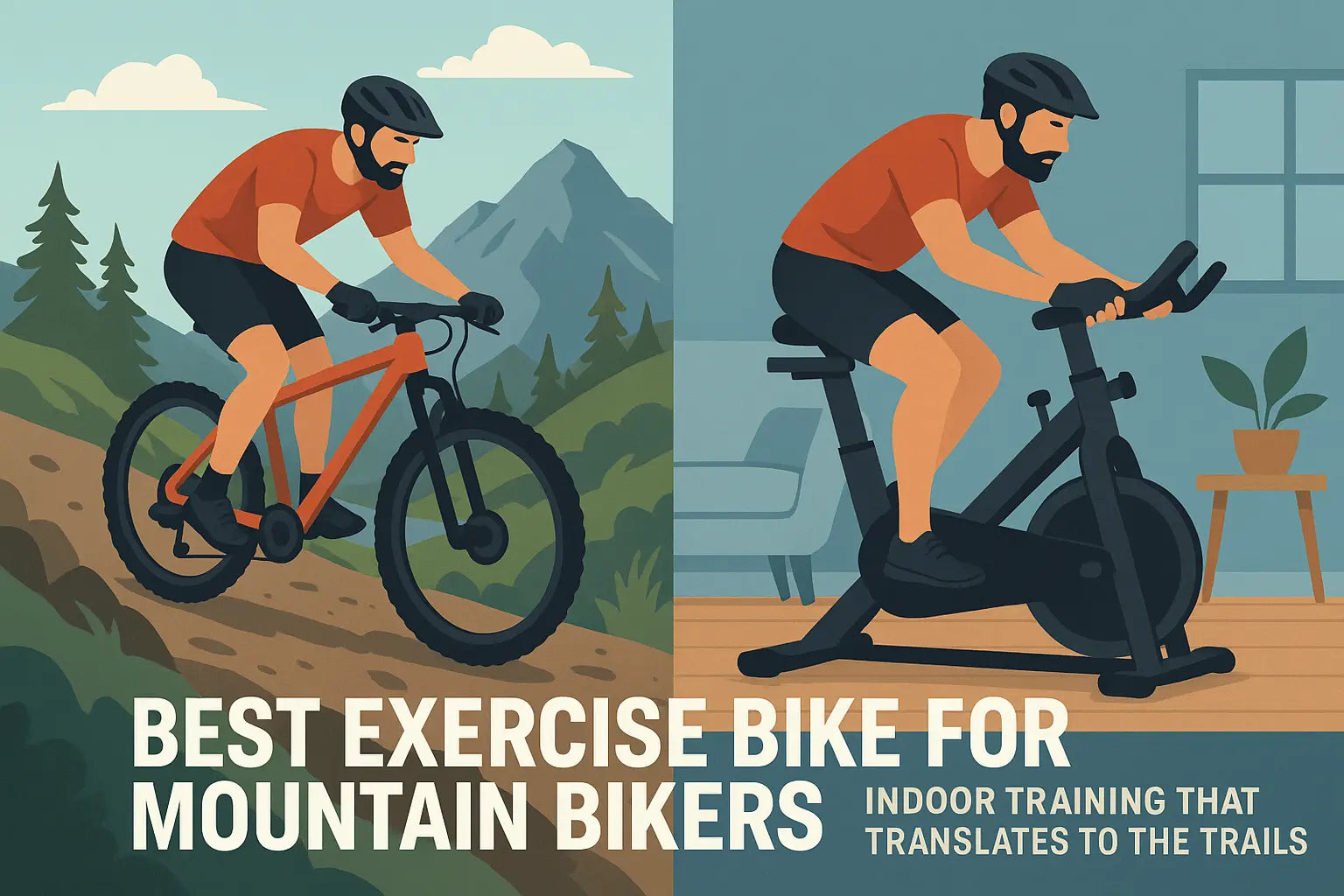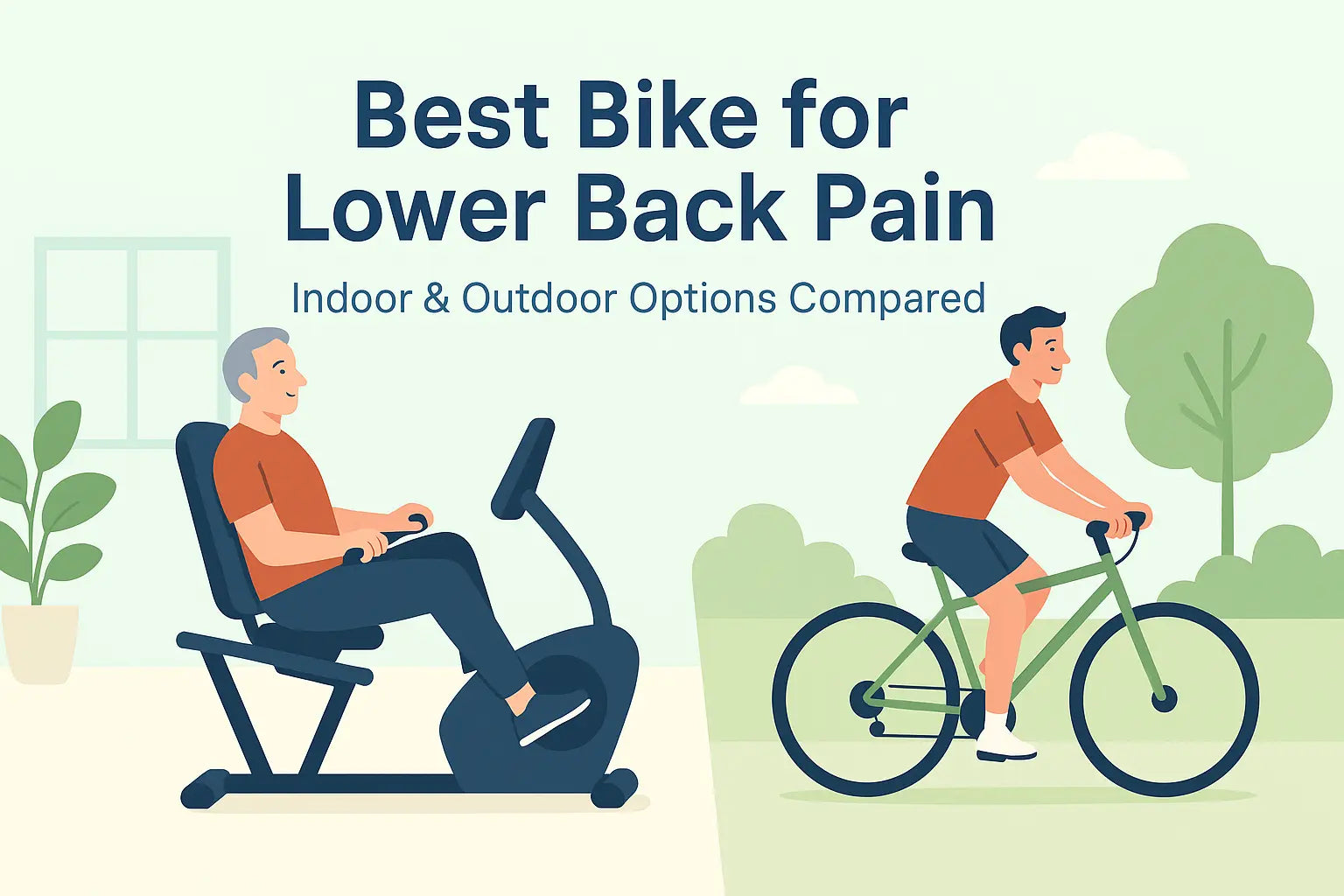For mountain bikers, the thrill of riding comes from conquering steep climbs, technical descents, and challenging trails. But when the weather turns bad, daylight is limited, or training time is short, an indoor exercise bike can become a vital tool to keep your fitness sharp. Home workouts with an indoor exercise bike offer a convenient and effective way for mountain bikers to maintain motivation and stay in peak condition year-round. Choosing the best exercise bike for mountain bikers isn’t as simple as picking any stationary bike — it requires considering the unique demands of off-road cycling, from explosive bursts of power to sustained endurance climbs.
In this article, we’ll break down the best exercise bike options for mountain bikers, compare their features, explain how they support different training goals, and even provide sample workouts to help you get started. Whether you’re a downhill thrill-seeker, a cross-country endurance rider, or a weekend warrior, you’ll find the right bike type to complement your outdoor rides.
Why Mountain Bikers Need Indoor Training
Research in Journal of Sports Sciences [1] highlights that cycling training improves both aerobic endurance and anaerobic power, supporting the mixed demands of mountain biking. Mountain biking demands a mix of endurance, power, and agility. Riders must maintain steady aerobic output on long climbs but also generate explosive strength for technical bursts, sprints, and sudden accelerations. Indoor training on an exercise bike can help fill gaps when trail riding isn’t possible, offering structured, repeatable workouts that build fitness efficiently.
Benefits of indoor training for mountain bikers include:
-
Year-round consistency: No need to worry about snow, rain, or trail closures.
-
Controlled intensity: Precisely target heart rate zones, cadence, and resistance.
-
Time efficiency: Maximize training during busy schedules without commuting to trails.
-
Recovery and rehab: Lower-impact riding options help injured riders maintain conditioning.
-
Track calories burned: Monitor calories burned on the bike's display to estimate energy expenditure and support training goals.
By integrating indoor workouts, mountain bikers can build the aerobic base, muscular endurance, and high-intensity power needed to excel when they return outdoors. Indoor training is also a valuable part of any rider’s fitness journey, supporting long-term progress and helping achieve personal health and performance goals.
Key Criteria When Choosing an Exercise Bike
Not every exercise bike is created equal. For mountain bikers, it’s essential to pick a bike that supports specific training goals. When choosing a bike for home use, look for features like compact design and streamlined design to save space and enhance aesthetics. Keep in mind that some bikes have a large footprint, which may affect placement in smaller spaces. Here are the main criteria to consider:
1. Riding Position
-
Spin and upright bikes mimic the forward-leaning position of outdoor cycling. Adjustable handlebar height and saddle height are important for achieving an ergonomic riding position, allowing you to customize the bike for optimal comfort and fit.
-
Recumbent bikes support the back, making them better for recovery or low-impact training but less realistic for MTB posture.
2. Resistance Type
-
A weighted flywheel helps create resistance by storing kinetic energy, which mimics the feel of outdoor riding and provides a smoother pedal stroke.
-
Some bikes use magnetic force to create resistance, allowing for quiet, smooth, and easily adjustable workouts.
-
Having multiple resistance levels lets you select a specific resistance level for each session, making it easy to customize intensity for different workouts, including HIIT routines.
-
Air resistance automatically scales with effort, and adding more resistance can provide a greater challenge for advanced riders.
3. Training Features
-
Does the bike offer power (watt) readings?
-
Can it connect to platforms like Zwift, TrainerRoad, or Strava and other third party apps for expanded workout options?
-
Does it allow interval programming?
-
Does it feature bluetooth connectivity for syncing with fitness apps and tracking performance data?
-
Is there a device holder for your own tablet or phone, making it easy to use apps or view content during workouts?
-
Can you use your own tablet to access virtual classes, live classes, and on demand classes?
-
Are spin classes and instructor led classes available through the bike or compatible apps?
-
Does the bike track other metrics such as speed for comprehensive workout analysis?
4. Durability
-
Mountain bikers often ride aggressively. Look for a solid frame, heavy flywheel, and high resistance capacity.
-
Check the max rider weight to ensure the bike is suitable for all users and offers the durability you need.
-
Be aware that some bikes have a limited range of adjustments, which can affect comfort and usability, especially for riders of different sizes.
-
Also, consider the large footprint of some bikes, as a sizable base with leveling stabilizers can enhance stability but may require more space in your workout area.
Comparing Exercise Bike Types
Different types of exercise bikes serve different needs. This comparison covers all the models relevant for mountain bikers, including indoor bikes and stationary bikes. Let’s compare the main options:
|
Bike Type |
Pros |
Cons |
Best For |
|---|---|---|---|
|
Spin Bike |
Mimics MTB posture; supports standing climbs; smooth resistance; some advanced models closely mimic the feel of an actual bike |
Saddle comfort may be limited; fewer recovery options |
Riders who want MTB-like feel indoors; best stationary bike for realistic training |
|
Air Bike |
Resistance increases with effort; great for HIIT and sprints |
Noisy; not ideal for long endurance sessions |
Riders focused on explosive power & cardio bursts |
|
Recumbent Bike |
Comfortable, low impact; great for recovery |
Position differs from MTB; less upper body activation |
Injured riders or those in rehab |
|
Upright Bike |
Compact design; good for general fitness and cardio; some are based on the original bike design |
Can’t stand and sprint; less MTB realism |
Riders focused on aerobic base fitness |
Among all the models, basic models are budget priced and suitable for beginners, but may lack connectivity, limiting interactive features. Budget exercise bike and best budget exercise bike options are available for those seeking affordability and value, while still delivering essential features and durability.
Spin Bikes for MTB Simulation
Spin bikes are often the go-to choice for mountain bikers. With adjustable resistance, the ability to stand and climb, and a riding position that closely mirrors outdoor cycling, they provide a realistic training environment. Many spin bikes also support clip-in pedals, allowing riders to use their MTB shoes and cleats for a seamless transition.
Modern spin bikes are designed to replicate the experience of a spin class, offering both live classes and on demand classes through integrated platforms. These virtual classes, often led by professional instructors, deliver a great workout and help keep motivation high. Riders can join group rides and participate in spin classes from home, making it easy to stay engaged and challenged. Motivational entertainment features, such as curated playlists and interactive leaderboards, further enhance the training experience.
Best Uses for Mountain Bikers:
-
Practicing steady climbs at varying resistance.
-
Building muscular endurance in the quads, glutes, and hamstrings.
-
Simulating long rides with intervals.
Spin bikes also pair well with virtual cycling apps like Zwift, giving mountain bikers a sense of outdoor riding while training indoors.
Air Bikes for Explosive Power
Air bikes, often called assault bikes, use a fan wheel that increases resistance as you pedal harder. This makes them excellent for high-intensity interval training (HIIT), which mimics the stop-and-go power demands of technical trail riding. Air bikes also allow users to track calories burned, speed, and other metrics during these intense workouts, helping riders monitor progress and performance.
Advantages for Mountain Bikers:
-
Natural resistance scaling for sprints and bursts.
-
Full-body workout with moving handles.
-
Builds anaerobic power and endurance.
However, air bikes are loud and not ideal for long, steady endurance rides. They’re best for riders looking to improve short-term explosive capacity.
Recumbent Bikes for Recovery and Low-Impact Training
Recumbent bikes may not replicate mountain biking posture, but they provide excellent support for the lower back and joints. For riders recovering from injury or looking for an easy cardio session, they’re an ideal option. Many recumbent bikes are available as basic models and are often budget priced, making them accessible for riders focused on recovery.
Why Mountain Bikers Might Use Them:
-
Safe training option during rehab from knee or back injuries.
-
Comfortable alternative on recovery days.
-
Allows cardiovascular training without strain.
For riders mixing aggressive trail riding with recovery needs, a recumbent bike can play a complementary role in training. To explore top options, check out our guide on the Best Recumbent Stationary Bike.
Upright Bikes for General Conditioning
Upright bikes sit between spin and recumbent bikes. They support a neutral cycling position but don’t allow aggressive climbing or sprinting. Still, they’re known for their compact design and streamlined design, making them ideal for home use, especially in smaller spaces. Upright bikes are also a good choice for those seeking a budget exercise bike, offering effective general aerobic training without a high price tag.
Benefits for Mountain Bikers:
-
Convenient and beginner-friendly.
-
Good for steady Zone 2 endurance rides.
-
Affordable compared to high-end spin bikes.
While not MTB-specific, upright bikes are a practical choice for riders focusing on base fitness and cardiovascular endurance.
Training Goals and Matching the Right Bike
Mountain bikers should align training goals with the bike they choose. Here’s a quick breakdown:
-
Climbing endurance → Spin bike or smart trainer with high resistance.
-
Sprint power → Air bike for HIIT intervals.
-
Aerobic conditioning → Upright bike for Zone 2 training.
-
Recovery/rehab → Recumbent bike.
Matching your bike choice to your goals ensures that your indoor workouts transfer directly to trail performance.
Sample Indoor Workouts for Mountain Bikers
To make the most of your exercise bike, try these structured workouts. These workouts are designed to be ridden for an extended period, simulating immersive bike rides that replicate real-world conditions and enhance your overall exercise experience.
1. Climbing Intervals (Spin Bike)
-
10 min warm-up
-
5 min moderate climb at 70–80 RPM
-
2 min recovery spin
-
Repeat 6 times
-
5 min cool-down
2. Explosive Sprint Training (Air Bike)
-
5 min easy warm-up
-
10 sec all-out sprint
-
50 sec easy pedal
-
Repeat 10–15 times
-
5 min cool-down
3. Zone 2 Endurance (Upright or Recumbent)
-
10 min warm-up
-
40–60 min steady riding in heart rate Zone 2
-
5 min cool-down
Tips for Maximizing Indoor Training
-
Use a fan to stay cool during long sessions.
-
Invest in a heart rate monitor to ensure proper training zones.
-
Wear padded shorts for comfort on spin or upright bikes.
-
Mix workouts to balance endurance, strength, and recovery.
-
Pair with strength training for core and upper body stability, which are crucial for MTB.
-
Consider floor space and additional space requirements when setting up your exercise bike, especially if it has a larger footprint or lean feature. Make sure you have enough room for safe and comfortable use.
-
Make your exercise bike the centerpiece of your home gym. A quality bike can provide a comprehensive workout and serve as a central component of a functional home gym, allowing you to perform various routines without leaving your house.
Source: Research published in the Journal of functional morphology and kinesiology [2] indicates that core stability training improves cycling efficiency and reduces injury risk.
Conclusion
A spin bike is the best stationary exercise bike for mountain bikers because it mimics outdoor MTB posture and climbing resistance.
By choosing the spin bike and following structured workouts, mountain bikers can stay fit, sharp, and ready to hit the trails with improved power, endurance, and confidence.
Final Tip: Don’t view an indoor bike as a replacement for trail riding, but as a complement to it. With the right approach, your time indoors will translate directly into faster climbs, stronger sprints, and more enjoyable rides when you’re back outdoors.
Reference
- Prinz, B., Simon, D., Tschan, H., & Nimmerichter, A. (2021). Aerobic and Anaerobic Power Distribution During Cross-Country Mountain Bike Racing. International journal of sports physiology and performance, 16(11), 1610–1615. https://doi.org/10.1123/ijspp.2020-0758
- Vikestad, V., & Dalen, T. (2024). Strength Training Among Male Master Cyclists-Practices, Challenges, and Rationales. Journal of functional morphology and kinesiology, 9(4), 232. https://doi.org/10.3390/jfmk9040232
Latest Articles







